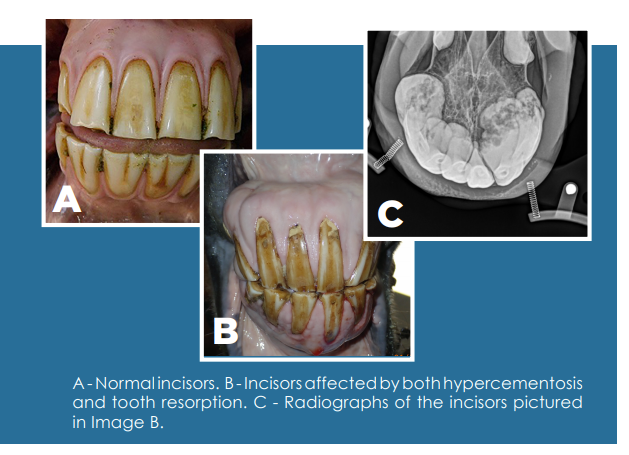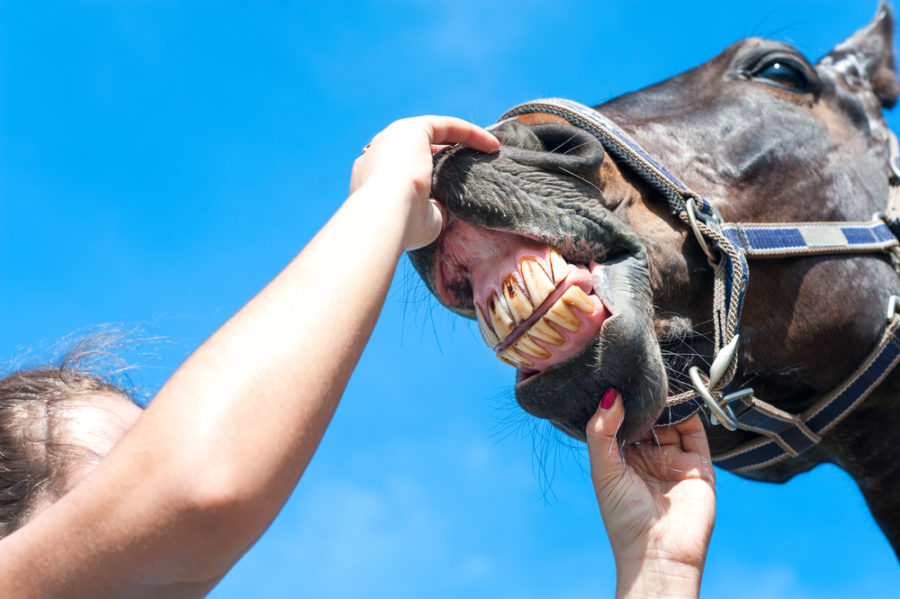EOTRH is a relatively new disease that impacts the teeth of horses. Here’s what we know so far.
If you haven’t heard of EOTRH, you aren’t alone. This destructive dental syndrome, clinically known as Equine Odontoclastic Tooth Resorption and Hypercementosis, has been affecting horses for a long time, but is now recognized with greater frequency and accurately diagnosed.
Defining EOTRH
Typically recognized in horses over 15 years old, EOTRH is characterized by internal and external tooth resorption (loss of the tooth) and destruction. Excessive cemental deposition is also a primary factor in this disease and the roots of the teeth eventually become enlarged – a condition known as hypercementosis. Infection, abscesses and fractures are also frequently seen with this condition.
The tooth degeneration that happens in horses with EOTRH leads to painful fractures and tooth loss, and can express itself through weight loss and difficulty eating, as well as performance and behavioral issues including head shyness and resistance to bend during work.

What’s the cause?
Older age is a risk factor but moderate-to-severe radiographic changes have also been identified in middle-aged horses (11 to 13 years). Horses that are diagnosed with EOTRH usually have signs of periodontal disease as well. Radiography is necessary for diagnosis and treatment planning, and in many cases extraction of all diseased teeth is a reasonable and effective treatment (see sidebar).
In many cases, extraction of all diseased teeth is a reasonable and effective treatment for EOTRH.
 Gaining a better understanding
Gaining a better understanding
According to a white paper titled Associated Risk Factors of EOTRH and Hypercementosis, “the painful disease involving equine incisors and canines does not have a single detriment but occurs as the result of cumulative impact of several risk factors: trauma caused by excessive dentistry, periodontal disease, feed type, genetics, and hormonal conditions such as Cushing’s and laminitis.”
“EOTRH has only come to the fore recently, so not all equine veterinarians or dentists are up to speed about it.”
In another white paper and video, Update on EOTRH, Leah E. Limone, DVM, of Northeast Equine Veterinary Dental Services in Massachusetts, states that “EOTRH is a relatively recently described disorder of unknown etiology affecting the teeth of older horses. The condition was first described as an uncommon disorder of canine and incisor teeth and subsequently described histologically and given a descriptive name.”







